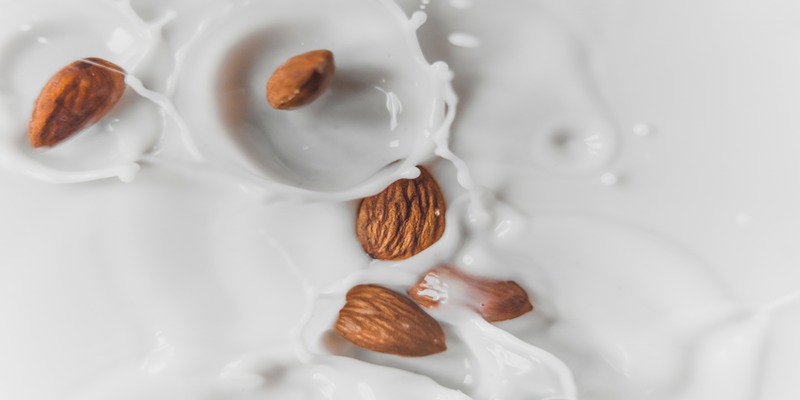Assessing Raw Milk: Nutritional Value Against Potential Dangers
Dec 10, 2023 By Nancy Miller
Complexity and controversy characterize the raw milk discussion. Skeptics worry about potential health hazards, while advocates praise it as a nutritional powerhouse. Raw milk is the subject of this in-depth investigation, which examines its nutritional worth and possible risks to consumers. The natural condition of raw milk, which is free of processing and pasteurization, is said by its advocates to be crucial for optimum health since it contains enzymes and minerals. On the other hand, we will also learn about the potential dangers of microbiological contamination in raw milk, the current safety regulations, and the effects on at-risk communities. Our goal is to help you make an educated decision regarding raw milk by providing a fair analysis of the nutritional advantages and health issues surrounding this contentious beverage.

The Allure of Raw Milk: A Nutritional Perspective
Raw milk, often hailed as "nature's elixir," has captivated enthusiasts with its touted nutritional value. Proponents argue that in its unaltered state, raw milk is a rich source of essential nutrients and enzymes that are compromised during pasteurization. This unprocessed liquid gold contains vitamins such as A, D, and K2, essential minerals like calcium and magnesium, and enzymes like lactase and lipase, which aid in digestion. Additionally, raw milk advocates claim that its unique composition can benefit those with lactose intolerance and allergies, as it may be more digestible and less allergenic than pasteurized milk. The allure lies in the belief that consuming raw milk in its pure form can provide a wholesome and unadulterated source of nutrition, fostering overall health and well-being. However, as we explore further, it becomes evident that this perspective is just one facet of the multifaceted raw milk debate, and a more comprehensive evaluation is needed to weigh its nutritional benefits against potential health risks.
Unveiling the Health Concerns of Raw Milk
While raw milk has its nutritional appeal, it is not without its share of health concerns, many of which revolve around microbial contamination risks. Inadequate handling, storage, or hygiene practices during milking and transport can facilitate the growth of these pathogens, posing a significant health hazard to consumers.
Microbial Contamination Risks
The microbial contamination risks associated with raw milk are not to be taken lightly. Consuming contaminated raw milk can result in symptoms ranging from mild gastrointestinal distress to life-threatening infections. This holds especially true for the most susceptible individuals, including neonates, the elderly, and those with compromised immune systems. The inherent unpredictability pertaining to the safety and quality of raw milk further amplifies the concerns surrounding microbiological testing and quality control.
Legal Restrictions and Safety Measures
In response to these concerns, several nations have implemented legislation that imposes limitations on the sale and distribution of unpasteurized milk, serving as a precautionary measure. To mitigate the health risks associated with consuming raw milk, these regulations impose restrictions on the accessibility of unpasteurized milk, mandate routine testing, and enforce sanitation standards. These measures, although essential for public safety, have sparked debates about personal choice and food freedom, adding complexity to the raw milk discourse.
Vulnerable Populations and Health Implications
Perhaps one of the most critical aspects of the health concerns surrounding raw milk is its impact on vulnerable populations. For infants, the elderly, pregnant individuals, and those with weakened immune systems, consuming raw milk can have dire consequences. Infections can lead to hospitalization and, in severe cases, may result in long-term health complications or even fatalities. Understanding the health implications of raw milk consumption within these specific demographics is paramount for making informed decisions about its suitability as a dietary choice. As we delve deeper into the raw milk debate, it becomes evident that while it may offer nutritional benefits, the associated health risks, particularly concerning microbial contamination, legal restrictions, and their implications for vulnerable populations, necessitate careful consideration and a balanced perspective.

Nutritional Benefits of Raw Milk
Amidst the health concerns, raw milk proponents staunchly advocate for its nutritional benefits, emphasizing its status as a nutrient-rich elixir that surpasses its pasteurized counterpart. Here, we delve into the nutritional advantages of raw milk, examining its richness in essential nutrients and enzymes, and exploring potential benefits for digestibility and allergy management.
Rich in Nutrients and Enzymes
Raw milk is celebrated for its nutrient density. It boasts an array of vitamins, including vitamin A, vital for vision and immune health, vitamin D, essential for bone health, and vitamin K2, crucial for cardiovascular health. Additionally, raw milk is a good source of minerals like calcium, magnesium, and phosphorus, all essential for bone strength and overall well-being. Enzymes present in raw milk, such as lactase and lipase, aid in the digestion and absorption of nutrients, potentially providing enhanced nutrient bioavailability.
Potential Digestibility and Allergy Benefits
One of the intriguing aspects of raw milk is its potential to be more digestible and less allergenic than pasteurized milk. Some individuals with lactose intolerance find that they can tolerate raw milk more comfortably, as it contains the lactase enzyme necessary for lactose digestion. Furthermore, raw milk enthusiasts argue that pasteurization alters milk proteins, potentially making them more allergenic, and suggest that consuming raw milk may reduce the risk of milk allergies. While research on these claims is ongoing, these perceived digestibility and allergy benefits continue to fuel the intrigue surrounding raw milk. As we explore the nutritional benefits of raw milk, it becomes evident that this perspective adds complexity to the ongoing debate. Raw milk's richness in essential nutrients and enzymes, along with its potential digestibility and allergy benefits, presents a compelling case for its consumption.
Conclusion
There are passionate proponents and outspoken detractors of raw milk in the nutrition community, and their arguments continue to this day. A complex story emerges from this investigation of the nutritional benefits and possible health hazards of raw milk. The potential for microbiological contamination in raw milk is a major worry, especially for susceptible groups, despite the fact that it contains many beneficial nutrients and enzymes. The goal of legal limitations and safety precautions is to find a middle ground between individual liberty and the public's well-being. A complete awareness of the nutritional advantages and potential health risks of raw milk should underpin the choice to give in to its temptation.







